
Fulham Football Club (![]() /ˈfʊləm/) is a professional English Premier League club based in Fulham, in the London Borough of Hammersmith and Fulham. Founded in 1879, they play in the Premier League, their 10th current season. Fulham is the oldest professional football team in London.[2] The club has spent twenty-four seasons in English football's top division, the majority of that in two spells during the 1960s and 2000s. The latter spell was associated with chairman Mohamed Al-Fayed, after the club had climbed up from League Two (then Division Three) in the 1990s. Fulham has never won a major honour, although they had reached two major finals. In 1975, as a Second Division team, they contested the FA Cup final for the only time in their history, losing 2–0 to West Ham United. Fulham reached the 2010 Europa League final, which they contested with Atlético Madrid in Hamburg, losing 2–1 after extra time. The club has produced many British greats including Johnny Haynes, George Cohen, Bobby Robson, Rodney Marsh and Alan Mullery. They play at Craven Cottage, a ground on the banks of the River Thames in Fulham which has been their home since 1896. The club's training ground is located near Motspur Park, where Fulham's Academy is also situated.
/ˈfʊləm/) is a professional English Premier League club based in Fulham, in the London Borough of Hammersmith and Fulham. Founded in 1879, they play in the Premier League, their 10th current season. Fulham is the oldest professional football team in London.[2] The club has spent twenty-four seasons in English football's top division, the majority of that in two spells during the 1960s and 2000s. The latter spell was associated with chairman Mohamed Al-Fayed, after the club had climbed up from League Two (then Division Three) in the 1990s. Fulham has never won a major honour, although they had reached two major finals. In 1975, as a Second Division team, they contested the FA Cup final for the only time in their history, losing 2–0 to West Ham United. Fulham reached the 2010 Europa League final, which they contested with Atlético Madrid in Hamburg, losing 2–1 after extra time. The club has produced many British greats including Johnny Haynes, George Cohen, Bobby Robson, Rodney Marsh and Alan Mullery. They play at Craven Cottage, a ground on the banks of the River Thames in Fulham which has been their home since 1896. The club's training ground is located near Motspur Park, where Fulham's Academy is also situated.
Contents
[hide]- 1 History
- 1.1 1879–1898: Formation
- 1.2 1907–1949: Football League
- 1.3 1949–1969: First Division Cottagers
- 1.4 1970–1994: Mixed fortunes outside the top flight
- 1.5 1994–96: Fulham's lowest ebb
- 1.6 1997–2001: Al Fayed takeover
- 1.7 2001–2007: Early Premier League years
- 1.8 2008–2010: Hodgson's transformation
- 1.9 2010 – present: Fulham under Hughes
- 2 Kit manufacturers and shirt sponsors
- 3 Current management
- 4 Current squad
- 5 Fulham in Europe
- 6 Rivalries
- 7 Supporters
- 8 Managers
- 9 Grounds
- 10 Honours
- 11 Statistics
- 12 Club mascot controversy
- 13 Notes
- 14 External links
[edit] History
This article or section may be slanted towards recent events. Please try to keep recent events in historical perspective. (October 2008)
See also: Fulham F.C. seasons
[edit] 1879–1898: Formation
Fulham were formed in 1879 as Fulham St Andrew's Church Sunday School F.C.,[3] founded by worshipers at the Church of England on Star Road, West Kensington (St Andrew's, Fulham Fields). Fulham's mother church still stands today with a plaque commemorating the team's foundation. They won the West London Amateur Cup in 1887 and, having shortened the name to its present form in 1888, they then won the West London League in 1893 at the first attempt. One of the club's first ever kits was half red, half white shirts with white shorts worn in the 1886–7 season.[4] Fulham started playing at their current ground Craven Cottage in 1896, their first game against now defunct rivals Minerva F.C. The club gained professional status on 12 December 1898, in the same year that they were admitted into the Southern League's Second Division. They adopted a red and white kit during the 1900–01 season.[5] In 1902–03 they won promotion from this division, entering the Southern League First Division. The club's first recorded all-white club kit came in 1903, and ever since then the club has been playing in all-white shirts and black shorts, with socks going through various evolutions of black and/or white, but are now normally white-only.[6] The club won the Southern League twice, in 1905–06 and 1906–07.
[edit] 1907–1949: Football League
Fulham joined The Football League after the second of their Southern League triumphs. The club's first league game, playing in the Second Division's 1907–8 season, saw them lose 1–0 at home to Hull City in September 1907. The first win came a few days later at Derby County's Baseball Ground, by a score line of 1–0. Fulham finished the season three points short of promotion in fourth place. The club progressed all the way to the semi-final of that season's FA Cup, a run that included an 8–3 away win at Luton Town. In the semi-final they were heavily beaten, 6–0, by Newcastle United. This is still a record loss for an FA Cup semi-final game.[7] Two years later the club won the London Challenge Cup in the 1909–10 season. Fulham's first season in Division Two turned out to be the highest that the club would finish for twenty-one years, until in 1927–28 when the club were relegated to the 3rd Division South, created in 1920. During this period, businessman and politician Henry Norris was the club chairman and curiously he had an indirect role in the foundation of Fulham's local rivals Chelsea F.C.. When he rejected an offer from businessman Gus Mears to move Fulham to land where the present-day Chelsea stadium Stamford Bridge is situated, Mears decided to create his own team to occupy the ground. In 1910, Norris started to combine his role at Fulham with the chairmanship of Arsenal. After finishing 5th, seventh and ninth (out of twenty-two teams) in their first three seasons in the Third Division South, Fulham won the division in the 1931–32 season. In doing so they beat Torquay United 10–2, won 24 out of 42 games and scored 111 goals, thus being promoted back to the Second Division. The next season they missed out on a second consecutive promotion, finishing 3rd behind Tottenham Hotspur and Stoke City. A mixed bag of league performances followed, although the club also reached another FA Cup semi-final during the 1935–36 season. On 8 October 1938 Craven Cottage saw its all-time highest attendance at a match against Millwall FC, with a crowd of 49,335 watching the game. League and cup football were severely disrupted by the outbreak of World War II in 1939, with the Football League split into regional divisions temporarily, with a national Football League War Cup and a London War Cup up for grabs. Post-war, a full league programme was only restored for 1946–47. In the third season of what is now considered the modern era of football, Fulham finished top of the Second Division, with a win-loss-draw record of 24–9–9 (identical to that which won them the Third Division South seventeen years previously)
[edit] 1949–1969: First Division Cottagers
Promotion to the top tier of English football saw the club perform poorly, finishing seventeenth in their first year and eighteenth in their second. In only their third season of First Division football, Fulham finished rock bottom of the 22-team league in the 1951–52 season, winning only eight of forty-two games. On 20 May 1951, Fulham played one of their first ever games in North America in an exhibition match against Celtic F.C. at Delorimier Stadium in Montreal in front of 29,000.[8]
1949–52
Football League Div. 1
(Level 1)
1952–59
Football League Div. 2
(Level 2)
1959–68
Football League Div. 1
(Level 1)
1968–69
Football League Div. 2
(Level 2)
A few seasons of mediocrity in the Second Division followed, but then the club reached the FA Cup semi-finals in 1958 and used this momentum to win promotion back to the First Division in the following season, having finished second to Sheffield Wednesday. Also joining Fulham in 1958 was Graham Leggat, who went on to score 134 goals in 277 appearances, (making him the club's fifth all-time top scorer). In the 1959–60 season they achieved tenth position in the First Division, which until finishing seventh in the [[FA Premier League 2008-09] was their highest ever league position. This accompanied another appearance in the last four of the FA Cup in 1962. By this time the club were regularly playing in front of 30,000 plus crowds at Craven Cottage,[9] despite struggling in the League. The club experienced several close escapes from relegation none more spectacular than in 1965–66. On the morning of 26 February 1966 Fulham had just fifteen points from twenty-nine matches. The last thirteen games saw Fulham win nine and draw two to reach safety. Eventually the club suffered relegation in the 1967–68 season having won just ten out of their forty-two games. However even that was not as catastrophic as the calamity of next season. Winning only seven in forty-two, the club were again relegated to the Third Division. (Note that this is not the same as the Third Division South, as the regional Third Divisions had been removed with the 1959 creation of the Fourth Division). It is impossible to talk about Fulham's history without mentioning probably the single most influential character in Fulham's history: Johnny Haynes.[10] 'Mr. Fulham' or 'The Maestro' as he later came to be known signed for The Cottagers as a schoolboy in 1950, making his first team debut on Boxing Day 1952 against Southampton at Craven Cottage. Haynes played for another eighteen years, notching up 657 appearances (along with many other club records too), his last appearance for Fulham coming on 17 January 1970. He is often considered as the greatest player in Fulham history,[11] and never played for another team in Britain.[12] He gained fifty-two caps for England (twenty-two as captain),[13] with many being earned while playing for Fulham in the Second Division. Haynes was injured in a car accident in Blackpool in 1962, but by his own admissions never regained the fitness or form to play for England again, missing out on England's victory in the 1966 World Cup for which he would have stood a chance of being selected.[14] The Stevenage Road Stand was re-named in his honour after his death in a car crash in 2005.
[edit] 1970–1994: Mixed fortunes outside the top flight
A minute's silence for Jim Langley
The aforementioned Third Division hiatus lasted only two seasons before the club was promoted back to the Second Division as runners-up in 1970–71. This spell also saw Fulham invited to the Anglo-Italian Cup, which saw the club draw four out of four games in two appearances in tournament between 1972 and 1974. Thus started of a period of high-profile signings for the club under Alec Stock in the mid-70s, including Alan Mullery and Bobby Moore. The reward of this was their only ever FA Cup final in 1975, having won their first semi-final in five attempts. The club then lost to West Ham in the final. This gained the club qualification to another European tournament, the Anglo-Scottish Cup, where they made the final, losing to Middlesbrough. That run in the FA Cup saw the setting of an improbable record, that of the most games needed to reach the final, Fulham playing eleven games including replays. In the build-up to the twelfth game, the Wembley final, Tony Rees and The Cottagers released a single, "Viva el Fulham" (based on Manolo Escobar's "Y viva España") which is still played (and occasionally chanted) at Fulham games. It reached #46 in the Pop Charts in 1975. The club set another record in the '70s when they took part in the first ever British league game to be played on a Sunday against Millwall F.C. in 1974, which was staged at The Den.[15]
1969–71
Football League Div. 3
(Level 3)
1971–80
Football League Div. 2
(Level 2)
1980–82
Football League Div. 3
(Level 3)
1982–86
Football League Div. 2
(Level 2)
1986–94
Football League Div. 3/2
(Level 3)
George Best played forty-seven times for the club in the 1976–77 season. Rodney Marsh, who having grown up with Fulham in the 1960s went on to play First Division football and play for England, rejoined the club in the same season, playing only sixteen games. This capped one of the most successful eras in Fulham history. The hangover from this meant the club were relegated again after winning only eleven in forty-two in the 1979–80 season, which saw Bobby Campbell's sacking to be replaced by Malcolm Macdonald. With a strong squad during his 1980–84 period in charge (with players such as Ray Houghton, Tony Gale, Paul Parker, Gerry Peyton and Ray Lewington), they won promotion again in 1981–82 back to the Second Division; although the promotion was overshadowed by the suicide of defender Dave Clement a few weeks before promotion was sealed. In 1980, Fulham founded the rugby league club that is now Harlequins Rugby League designed to be an extra stream of income for the football club. Then called 'Fulham Rugby League', they played at Craven Cottage until moving away from the parent club in 1984. Fulham narrowly missed out on back-to-back promotions to the First Division, losing 1–0 to Derby away on the last day of the 1982–83 season – although the match was abandoned after eighty-eight minutes due to a pitch invasion. The side which had shown so much promise was gradually sold off and broken up as the club had debts to pay off, so it was little surprise when the club were relegated again to the Third Division in 1986. The club nearly went out of business in 1987 and the same year saw the break-down of an ill-advised merger attempt with QPR. It was only the intervention of ex-player Jimmy Hill that allowed the club to stay in business as a re-structured 'Fulham FC 1987 Ltd.' In 1987 the club took part in what was one of the longest penalty shoot-outs recorded – it needed twenty-eight spot kicks to sort out a winner between them and Aldershot following a Freight Rover Trophy match. In 1992 the foundation of the Premier League saw Fulham's division of the time, the Third Division, re-named the Second Division. However the club were relegated from that to the new Third Division after a poor 1993–94 season, seeing the club in the basement of the Football League, with Ian Branfoot appointed as new manager.
[edit] 1994–96: Fulham's lowest ebb
Fulham's badge in the 80s and 90s prior to Al Fayed's change
1994–97
Football League Div. 3
(Level 4)
After a eighth place finish in Branfoot's first season in charge the club hit its lowest ever final league position in the 1995–96 season, finishing 17th out of 24.[16][17] Branfoot was sacked as manager, but remained at the club in other capacities for a short while. In February 1996 Micky Adams became player-manager. Adams oversaw an upturn in form that lifted the side out of relegation danger. The next season he engineered a second-place league finish – only missing out on first place due to the league dropping the old "goal difference" system in favour of a "goals scored" tally, which would have placed Fulham above winners Wigan Athletic. Ironically, the club's then Chairman Jimmy Hill, had successfully argued that goals scored should decide places of teams tied on points while sitting on an FA panel.
[edit] 1997–2001: Al Fayed takeover
1997–99
Football League Div. 2
(Level 3)
1999-01
Football League Div. 1
(Level 2)
2001–
Premier League
(Level 1)
Millionaire Mohamed Al-Fayed purchased the club in summer 1997 and fired Adams in the aftermath of a poor start. He installed a two-tier management "dream team" of Ray Wilkins as First Team Manager and Kevin Keegan as Chief Operating Officer),[18] pledging that the club would reach the Premier League within five years. After an argument over team selection, Wilkins left the club in May 1998 to hand over the full managerial duties to Keegan, who steered the club to promotion the next season, winning 101 points out of a possible 138, after spending £1.1 million to sign Paul Peschisolido from West Bromwich Albion who was top scorer and captained by Chris Coleman – then the most expensive footballer outside the top two divisions of the English league.[19] Keegan then left to become manager of the England team, and Paul Bracewell was put in charge. Bracewell was sacked in March 2000, as Fulham's promising early season form dwindled away to a mid-table finish. Frenchman Jean Tigana was put in charge and, having signed a number of young stars (including French striker Louis Saha), he guided Fulham to their third promotion in five seasons in the 2000–01 season, giving Fulham top flight status for the first time since 1968. Fulham once again amassed 101 points out of a possible 138 in their title run. They are the only team to have twice reached 100 points in a season. During the season Chris Coleman, was involved in a car crash which put him out of action for well over a year and eventually ended his playing career after he failed to make a sufficient recovery. Fulham's run through the divisions saw a large turnover of players and the only player to play for the club in all four leagues was Sean Davis.
[edit] 2001–2007: Early Premier League years
Fulham (White) playing Portsmouth (Blue) in front of Fulham fans in the Hammersmith End
Fulham returned to the top division of English football, and competed in the Premier League for the first time. The club finished the 2001–02 season mid-table, in thirteenth place. Fulham were the only team to host top-flight football with some standing areas in the twenty-first century, but due to restrictions on standing this was not allowed to continue. Fulham were forced to groundshare with QPR at Loftus Road during the 2002–03 and 2003–04 seasons while Craven Cottage was being rebuilt as an all-seated stadium. In 2002–03 Fulham spent most of the season near the bottom of the table. Chairman Mohammed Fayed told manager Jean Tigana that his contract would not be renewed at the end of the season. Tigana broke the club record for most expensive signing, buying Steve Marlet from Olympique Lyonnais for £11.5 million. With five games to go, and relegation still possible, Tigana was sacked, and Chris Coleman was temporarily put in charge. Fulham won ten points from a possible fifteen and managed to avoid relegation. Coleman was given the manager's job on a permanent basis in the summer of 2003 and despite predictions that the inexperience of Coleman would result in Fulham's relegation,[20] he kept the club well clear of relegation, guiding them to a club record ninth place finish in his debut season. This might have been greater had the club not come under significant financial pressure to sell Louis Saha to Manchester United, for which they received a club record £13 million. Coleman notched up another impressive performance in the 2004–05 season and guided Fulham to a secure 13th place finish. The following season Fulham improved by one place, finishing twelfth, the high point was a 1–0 win over local rivals and champions Chelsea in the West London derby. The 2005–06 season proved a tougher affair, but safety was once again mathematically assured with three games left of the season and a 1–0 win over Wigan Athletic. There were three relative high points in an inconsistent season: a 6–1 rout of West Bromwich Albion, a 1–0 win over local rivals and champions Chelsea in the West London derby, and a 2–0 win over 2005 European champions Liverpool F.C. Fulham's home form was the best outside the top six, with 12 wins from 18 games, while their away form was the worst in the entire league with one win and four draws from eighteen games. A game they were winning away 1–0, versus Sunderland, was abandoned after twenty-one minutes because of persistent snowfall. Finally, on 29 April 2006, Fulham achieved a first away victory of the campaign with a 2–1 win over Manchester City. Despite the difficulties experienced throughout this season, Fulham achieved a 12th place finish — an improvement on the previous campaign.
Fulham playing in their light blue away kit against Bolton in the FA Cup 2005
Fulham did not get off to a good start in 2006–07, losing their first match 5–1 to Manchester United at Old Trafford. This result consigned them to the foot of the table and left them as the season's favourites for early relegation contenders with the bookies; but then recovered well and were riding as high as eighth at one point in December 2006. However after a poor run of form on 10 April 2007, following defeats at the hands of Manchester City (3–1) and Everton (4–1) Fulham terminated the contracts of Chris Coleman and Steve Kean with immediate effect, while Northern Ireland manager Lawrie Sanchez and Les Reed were put in temporary charge. Fulham ensured safety by the narrowest of margins by defeating Liverpool 1–0 via a second half Clint Dempsey goal. Despite a return of just four points from a possible fifteen, Sanchez had retained Fulham's top-flight status and was rewarded for his efforts with a permanent contract, subsequently resigning as Northern Ireland manager on Friday 11 May 2007.[21] Sanchez received strong financial backing from the board and made a number of signings during the summer-break. The most expensive of these additions was striker Diomansy Kamara, a £6 million signing from Championship outfit West Bromwich Albion. However, the majority of Sanchez's purchases were players from the Northern Ireland set-up, including Steven Davis, David Healy, Aaron Hughes and Chris Baird.
[edit] 2008–2010: Hodgson's transformation
Roy Hodgson as head coach at Fulham
After just two league wins in the first five months of the season and with Fulham in the relegation zone, Sanchez was dismissed on 21 December 2007.[22] Roy Hodgson was named as the new manager of Fulham on 28 December 2007, and took up his contractual duties on 30 December,[23] just two days before the January transfer window opened. Hodgson's tenure started with a 2–1 loss to Chelsea on New Year's Day, followed by a goalless draw with Bolton Wanderers at the Reebok Stadium before he claimed his first win five days later against Aston Villa, courtesy of a Jimmy Bullard free-kick. Despite this positive start, Fulham struggled to build momentum and their form remained patchy throughout March. Hodgson did however add a second victory on 16 March 2008, against an Everton side chasing the fourth and final UEFA Champions League qualification spot. Former Toffees Simon Davies and Brian McBride combined, with the latter heading home to secure a 1–0 win at Craven Cottage. Again however, Fulham failed to maintain a consistent run of form following a victory. A 3–1 home defeat at the hands of Roy Keane's Sunderland side left Hodgson on the verge of tears in the post-match press conference and many pundits writing off Fulham's survival chances.[24] Fans contended that although Hodgson's side were markedly improved defensively, and retained possession much better than under either Coleman or Sanchez, with aesthetically pleasing football, a lack of fire power up-front and the failure to settle on a first-choice 11 had hurt the team and caused vital points to be dropped. Despite the negative press Hodgson continued to believe survival was attainable and rallied his team to win four of their remaining five games and secure their Premier League status for the 2008–09 season. This incredible run of form started with a first away win in thirty-four attempts against relegation rivals Reading. However, for many fans the turning point of the season came two games later, against Manchester City. Fulham trailed 2–0 at half-time and due to results in other fixtures, were mathematically relegated. However the introduction of the much maligned Diomansy Kamara heralded the start of a fantastic comeback. Kamara struck twice as Fulham registered a 3–2 victory and second consecutive away win. This result set the scene for a "six-pointer" against fellow strugglers Birmingham City at Craven Cottage. McBride and Erik Nevland struck to lift Fulham out of the relegation zone for the first time in months and leave survival in the club's own hands. Barring a goal-rush from Reading, a win against a Portsmouth side looking ahead to their first FA Cup Final appearance in sixty-nine years would guarantee survival. With fifteen minutes to play Fulham were again mathematically relegated with Birmingham City and Reading leading comfortably. However Kamara earned Fulham a free-kick with seventy-six minutes played, and Bullard's delivery found Danny Murphy who headed home the decisive goal, sparking manic celebrations from the travelling fans. Hodgson had ensured survival against all odds, breaking several club records in the process and cementing his place in Fulham folklore. Fulham reached the quarter finals of the 2008-09 FA Cup, eventually losing at home to Manchester United. In the league they finished seventh, earning qualification for the inaugural UEFA Europa League, the second time that the club had entered a UEFA competition. 2009–10 was arguably the most successful season in the club's history. They were eliminated from the FA Cup in the quarter finals for the second year running, and finished twelfth in the Premier League.[25] In the inaugural UEFA Europa League Fulham reached the final, meeting Spanish club Atletico Madrid at the Volksparkstadion in Hamburg, Germany. In their first European cup final the Cottagers were beaten 2–1 in extra time, having drawn 1–1 after ninety minutes. The achievement of taking Fulham so unexpectedly far, beating famous teams like Hamburg, Juventus, Shakhtar Donetsk, and Basel in the competition led to Roy Hodgson being voted the LMA Manager of the Year by the widest margin in the history of the award.[26] Despite losing 3–1 in first leg away to Italian giants Juventus in Turin, and falling behind 0–1 minutes into the second leg of the tie at Craven Cottage, Fulham scored 4 unanswered goals, capped by an exceptional strike from midfielder Clint Dempsey to put them through to the quarter-finals. Following the season Hodgson left Fulham to manage Liverpool.
[edit] 2010 – present: Fulham under Hughes
On 29 July 2010 Mark Hughes was named the successor to Roy Hodgson, signing a two-year contract. Hughes last managed Manchester City, being fired in December 2009. He had previously managed the Wales national team and Blackburn Rovers.[27] Hughes' first match in charge was against Bolton Wanderers at the Reebok Stadium. It finished in a 0-0 draw. His first game at Craven Cottage was against Manchester United (one of his playing career teams). Brede Hangeland scored an equaliser in the last minutes after giving the opponent a 2-1 lead with an own goal 6 minutes earlier. Hughes' first Football League Cup match finished in a 6-0 win over Port Vale. Fulham became the first away team to visit Bloomfield Road in the Premier League against Blackpool F.C.. It finished in a 2-2 draw with Dickson Etuhu scoring to equalise in the 87th minute after Blackpool turned around a 1-0 deficit. Hughes' unbeaten league run ended against Tottenham Hotspur in a 2-1 defeat at Craven Cottage on the 16th October, 2010. Hughes lead Fulham to a 6-2 win over Peterbrough in his first F.A. Cup fixture. Diomansy Kamara scoring a hat-trick. The run continued with 4-0 win over London rivals Tottenham Hotspur, all goals coming in the first half. Fulham started to become harder to defeat at home including a 0-0 draw with rivals Chelsea F.C., although Clint Dempsey missed an injury time penalty after being fouled by Man of the Match, David Luiz. The run continued with a 3-2 win over Blackburn Rovers and a 3-0 win against Blackpool F.C.
[edit] Kit manufacturers and shirt sponsors
[edit] Kit manufacturers
- 1974–1977: Umbro
- 1977–1981: Adidas
- 1981-1984: Osca
- 1984-1987: Umbro
- 1987-1990: Scoreline
- 1990–1992: Ribero
- 1992–1993: DMF Sportswear
- 1993-1996: Vandanel
- 1996-1997: Le Coq Sportif
- 1997-2003: Adidas
- 2003–2006: Puma
- 2006–2007: Airness
- 2007-2010: Nike
- 2010–Present: Kappa
[edit] Shirt sponsors
- 1974–1984: None
- 1984–1985: William Younger
- 1985–1987: Prestige Travel
- 1987: None
- 1988: Emirates
- 1988-1991: TeleConnect
- 1991-1993: None
- 1993-1998: GMB
- 1998-2001: Demon Internet
- 2001-2002: Pizza Hut
- 2002-2003: Betfair.com
- 2003-2005: dabs.com
- 2005-2007: Pipex
- 2007-2010: LG
- 2010–Present: FxPro
[edit] Current management
Position
Name
Nationality
Manager:
Mark Hughes ![]() Welsh
Welsh
Assistant Manager:
Mark Bowen ![]() Welsh
Welsh
First Team Coach:
Eddie Niedzwiecki ![]() Welsh
Welsh
First Team Coach:
Glyn Hodges ![]() Welsh
Welsh
Development Squad Coach:
Billy McKinlay ![]() Scottish
Scottish
Goalkeeping Coach:
Kevin Hitchcock ![]() English
English
Head of Sports Medicine and Exercise Science
Mark Taylor ![]() English
English
Strength/Conditioning
Scott Miller ![]() Australian
Australian
First Team Doctor:
Steve Lewis ![]() English
English
Fulham Academy Director:
Huw Jennings ![]() Welsh
Welsh
[edit] Current squad
- As of 21 March 2011. [28]
[edit] Premier League squad
- 25-man squad [29]
- Players under 21 do not need to be named and can still be used
Note: Flags indicate national team as has been defined under FIFA eligibility rules. Players may hold more than one non-FIFA nationality.
No.
Position
Player
11 ![]()
MF
Zoltán Gera
13 ![]()
MF
Danny Murphy (captain)
No.
Position
Player
16 ![]()
MF
Damien Duff
18 ![]()
DF
Aaron Hughes (vice-captain)
20 ![]()
MF
Dickson Etuhu
22 ![]()
FW
Eiður Guðjohnsen (on loan from Stoke City)
23 ![]()
MF
Clint Dempsey
25 ![]()
FW
Bobby Zamora
29 ![]()
MF
Simon Davies
30 ![]()
FW
Moussa Dembélé
32 ![]()
DF
Rafik Halliche
[edit] Players joining on 1st July 2011
Note: Flags indicate national team as has been defined under FIFA eligibility rules. Players may hold more than one non-FIFA nationality.
No.
Position
Player
![]()
DF
Dan Burn (From Darlington)
[edit] Out on Loan
Note: Flags indicate national team as has been defined under FIFA eligibility rules. Players may hold more than one non-FIFA nationality.
No.
Position
Player
15 ![]()
FW
Diomansy Kamara (at Leicester City)
17 ![]()
MF
Bjørn Helge Riise (at Sheffield United)
21 ![]()
FW
Eddie Johnson (at Preston North End)
No.
Position
Player
26 ![]()
MF
Kagisho Dikgacoi (at Crystal Palace)
36 ![]()
FW
Lauri Dalla Valle (at Bournemouth)
![]()
MF
Keanu Marsh-Brown (at Milton Keynes Dons)
[edit] Reserve squad
- As of 4 March 2011 [30]
Note: Flags indicate national team as has been defined under FIFA eligibility rules. Players may hold more than one non-FIFA nationality.
No.
Position
Player
24 ![]()
FW
Gaël Kakuta (on loan from Chelsea)
28 ![]()
DF
Matthew Briggs
33 ![]()
FW
Danny Hoesen
37 ![]()
MF
Alex Kačaniklić
38 ![]()
GK
Neil Etheridge
![]()
FW
Richard Barroilhet
![]()
GK
Marcus Bettinelli
No.
Position
Player
![]()
FW
Jonathan Cosgrove
![]()
MF
Kerim Frei
![]()
MF
Courtney Harris
![]()
GK
Jesse Joronen
![]()
FW
Richard Peniket
![]()
DF
Alex Smith
![]()
FW
Marcello Trotta
![]()
FW
Corey Gameiro
[edit] Academy squad
Main article: Fulham Academy
[edit] Fulham in Europe
Fulham have twice qualified for European Competition, qualifying for the Intertoto Cup after their inaugural season in the Premier League, and the Europa League after their club-best seventh place finish in the 2008–09 Premier League season. Fulham have never lost at home in European competition, with a record of eleven wins and four draws. On 18 February 2010, Fulham's home unbeaten run in European competition stretched to thirteen games when they beat UEFA Cup holders Shakhtar Donetsk of Ukraine 2–1 at Craven Cottage in the Europa League Round of 32 first leg, with goals from Zoltan Gera and Bobby Zamora. In Fulham's 29 games in all European competitions, they have only lost four of them: 2–1 to Hertha, 1–0 to Amkar Perm, 2–1 to AS Roma (after two controversial sending-offs), and 3–1 to Juventus. After defeating the twenty-time Italian champions Juventus on 18 March, Fulham advanced to the quarterfinals against reigning German champions Wolfsburg. On 1 April, Fulham defeated Wolfsburg 2–1 in the first leg of the two-legged home-and-away series. Zamora and Damien Duff scored within five minutes of each other in the second half, while Wolfsburg defender Alexander Madlung scored two minutes from time to cut the deficit in half. One week later at Wolfsburg, Zamora struck again, this time in the first minute to give Fulham an overall 3–1 lead in the series. Wolfsburg were unable to overturn the two goal deficit, and Fulham advanced to the semi-finals of the Europa League. On 22 April, following a long coach trip due to flights being grounded because of the Icelandic volcano, Fulham attained a 0–0 draw against Hamburger SV in the first leg of their Europa League Semi-Final in Hamburg. On 29 April, they beat Hamburg 2–1 at Craven Cottage to secure a place in the final. On 12 May, Fulham lost 2–1 after extra time to Atletico Madrid in the UEFA Europa League Final. Fulham went 1–0 down, though it ended 1–1 after ninety minutes thanks to a Davies equaliser to force extra time. Diego Forlán scored the winner on the 116th minute to clinch the game for the Spaniards.[31]
Season
Competition
Round
Country
Club
Home Leg
Away Leg
Aggregate
2002/03
Intertoto Cup
Second Round ![]()
Haka
0–0
1–1
1–1
Third Round ![]()
Egaleo
1–0
1–1
2–1
Semi Final ![]()
Sochaux
1–0
2–0
3–0
Final ![]()
Bologna
3–1
2–2
5–3
UEFA Cup
First Round ![]()
Hajduk Split
2–2
1–0
3–2
Second Round ![]()
Dinamo Zagreb
2–1
3–0
5–1
Third Round ![]()
Hertha BSC
0–0
1–2
1–2
2009/10
UEFA Europa League
Third Qualifying Round ![]()
Vėtra
3–0
3–0
6–0
Play-Off Round ![]()
Amkar Perm
3–1
0–1
3–2
Group Stage ![]()
Basel
1–0
3–2
![]()
CSKA Sofia
1–0
1–1
![]()
Roma
1–1
1–2
Round of 32 ![]()
Shakhtar Donetsk
2–1
1–1
3–2
Round of 16 ![]()
Juventus
4–1
1–3
5–4
Quarter Final ![]()
Wolfsburg
2–1
1–0
3–1
Semi Final ![]()
Hamburg
2–1
0–0
2–1
Final ![]()
Atlético Madrid
1–2 (AET)
[edit] Rivalries
Main article: West London derby
Fulham fans consider their main rivals to be Chelsea.[32] Despite this fixture not being played that often in the years preceding Fulham's ascent to the top division, this is a clear local derby as Chelsea's ground, Stamford Bridge, is in Fulham. However, it is only recently that the two teams have been competing in the same league.
Fulham consider their secondary rivalries to be with QPR and Brentford.[32] Fulham last played QPR in the 2000–01 season and Brentford in the 1997–98 season. They also have small rivalries with other London clubs, including West Ham.
Outside of London, Gillingham are still considered rivals to Fulham despite the two clubs having played in different divisions for the past nine years. Fulham and Gillingham have been involved in several high-tempered matches in the lower leagues, including the infamous death of a Fulham supporter at a game between the two clubs in Kent, in the 1990s.
[edit] Supporters
Fulham's fan base has fluctuated over the years with high crowds coinciding with the clubs success in the Premier League so that the club now averages in the top twenty best home attendances in the country. Fulham supporters have played a vital role in the clubs long term stay at Craven Cottage. When the club moved temporarily to Loftus Road a committee known as 'Back to the Cottage' was formed, committed to ensuring the club continued to play at their spiritual home.
Fulham's more hardcore fans are known to congregate at the back of the Hammersmith end, the traditional home end of Fulham fans, in blocks H4 H5 and H6. Another area of the ground where Fulham fans who sing congregate is H-Block of the Johnny Haynes stand. Fulham has a selection of celebrity supporters such as Hugh Grant, Lily Allen, Keith Allen and John O'Farrell[33].
[edit] Managers
Fulham have so far had 29 managers at the club in 102 years, meaning that the average length of service for a Fulham manager is three years and 189 days. Prior to the appointment of the first manager at the club (Bradshaw in 1904), duties normally assigned to a modern day manager would have been shared between club secretary, captain and other officials.
Name
From
To
![]() Harry Bradshaw
Harry Bradshaw
1904
1909
![]() Phil Kelso
Phil Kelso
1909
1924
![]() Andy Ducat
Andy Ducat
1924
1926
![]() Joe Bradshaw
Joe Bradshaw
1926
1929
![]() Ned Liddell
Ned Liddell
1929
1931
![]() Jimmy McIntyre
Jimmy McIntyre
1931
1934
![]() Jimmy Hogan
Jimmy Hogan
1934
1935
![]() Jack Peart
Jack Peart
1935
1948
![]() Frank Osborne*
Frank Osborne*
1948
1949
![]() Bill Dodgin, Sr.
Bill Dodgin, Sr.
1949
1953
![]() Frank Osborne*
Frank Osborne*
1953
1956
![]() Doug Livingstone
Doug Livingstone
1956
1958
![]() Bedford Jezzard
Bedford Jezzard
1958
1964
![]() Vic Buckingham
Vic Buckingham
1965
1968
![]() Bobby Robson
Bobby Robson
1968
1968
![]() Bill Dodgin, Jr.
Bill Dodgin, Jr.
1969
1972
![]() Alec Stock
Alec Stock
1972
1976
![]() Bobby Campbell
Bobby Campbell
1976
1980
![]() Malcolm MacDonald
Malcolm MacDonald
1980
1984
![]() Ray Harford
Ray Harford
1984
1986
![]() Ray Lewington
Ray Lewington
1986
1990
![]() Alan Dicks
Alan Dicks
1990
1991
![]() Don Mackay
Don Mackay
1991
1994
![]() Ian Branfoot**
Ian Branfoot**
1994
1996
![]() Micky Adams
Micky Adams
1996
1997
![]() Ray Wilkins
Ray Wilkins
1997
1998
![]() Kevin Keegan†
Kevin Keegan†
1998
1999
![]() Paul Bracewell
Paul Bracewell
1999
2000
![]() Jean Tigana
Jean Tigana
2000
2003
![]() Chris Coleman
Chris Coleman
2003
2007
![]() Lawrie Sanchez‡
Lawrie Sanchez‡
2007
2007§
![]() Roy Hodgson
Roy Hodgson
2007
2010
![]() Mark Hughes
Mark Hughes
2010
- * Frank Osborne was employed continuously by the club from 1948 to 1963, but only spent the above periods as designated manager.
- ** Ian Branfoot continued to be employed by the club after his dismissal as manager.
- † Kevin Keegan was employed by the club as Chief Operating Officer (during which time he essentially acted as an Assistant Manager) during the time of his predecessor (Ray Wilkins) being the actual manager.
- ‡ Lawrie Sanchez took over as caretaker manager after the sacking of Chris Coleman and was named permanent manager after the club's safety from relegation was assured.
- § Lawrie Sanchez was sacked after less than a year by the Fulham board on 21 December 2007
Managerial records:
- Only one man has managed the club through two different spells, Frank Osborne, in 1948–49 and then 1953–56.
- The longest spell as Fulham manager was by Phil Kelso, 15 years (1909–1924)
- Several managers have failed to last more than a year at the club: Bobby Robson, Alan Dicks, Ray Wilkins, Paul Bracewell and Lawrie Sanchez. Further to this, Frank Osborne only had a year after his initial arrival at the club during which he was principally in charge of the team (before Dodgin, senior) arrived, although he later took sole charge of the club for an extended period.
Temporary managers at the club have included:
- Johnny Haynes: Took over after Sir Bobby Robson was fired in 1968 for only a handful of matches. The Maestro was offered the role permanently but had no inclination to become a manager.
- Karl-Heinz Riedle: when Paul Bracewell was fired half way through the 1999–2000 season, there was a temporary period of Fulham being managed by their striker Karl-Heinz Riedle, assisted his old boss at Liverpool, Roy Evans. Riedle injured a lung in the season's penultimate game – his last for the club.
- Chris Coleman: after Tigana resigned four months before planned in 2003, Chris Coleman was soon appointed as caretaker manager, much to the delight of the fans. Having initially denied he wanted the post, Coleman accepted the role of full-time manager that summer.
- Lawrie Sanchez: when Coleman was sacked, Sanchez came in to take control of the club for the remaining five games of the season. (See above)[34]
- Ray Lewington: took temporary charge of Fulham for three games following Lawrie Sanchez's dismissal in December 2007.
- Ray Lewington: took temporary charge after Roy Hodgson left the club in July 2010 until the appointment of Mark Hughes.
[edit] Grounds
Between the years 1879 and when Fulham had a ground to call their own in 1896, they played at a number of stadiums, only some of which were recorded and this should not be regarded as a full or complete list. Only rivals and former landlords QPR has played at more home stadiums. Some of the early grounds listed below are likely to have been park/parkland which has now been developed on. Even when the club purchased Craven Cottage and the surrounding land in 1894, they had to wait two years before they could play a game there.
- 1879: (possible first ground though records are inaccurate) – Hurlingham Park, Fulham
- 1879–83: Star Road, Hammersmith
- 1883–84: Eel Brook Common, Fulham
- 1884–85: Lillie Rec, Fulham
- 1885–86: Putney Lower Common, Putney
- 1886–88: Ranelagh House, Fulham
- 1888–89: Barn Elms Playing Fields, Barnes (the rugby fields are located across the Thames from Craven Cottage today)
- 1889–91: Parsons Green, Fulham and Roskell's Fields (next to Parsons Green tube station)
- 1891–95: Half Moon, Putney
- 1895–96: West Brompton
- 1896–2002: Craven Cottage, Fulham
- 2002–04: Loftus Road, Shepherd's Bush (groundshare with Queens Park Rangers during Craven Cottage renovation)
- 2004–: Craven Cottage, Fulham (read the Craven Cottage article for future prospects of the ground.)
[edit] Honours
[edit] Domestic Leagues
Second Division/First Division (now known as the Championship, the second tier of English football)
- Champions: 1948–49, 2000–01
- Runners-up: 1958–59
Third Division (South)/Third Division/Second Division (now known as League One, the third tier of English football)
- Champions: 1931–32, 1998–99
- Runners-up: 1970–71
Fourth Division/Third Division (now Known as League Two, the fourth tier of English football)
- Runners-up 1996–97
Southern League First Division Champions
- 1905–06, 1906–07
Southern League Second Division Champions
- 1901–02, 1902–03
[edit] Domestic Cups
- Runners-up: 1975
- Semi-finals: 1908, 1936, 1958, 1962, 2002
- Quarter-finals: 1968, 1971, 2000, 2001, 2005
[edit] European Cups
- Runners-up: 2009–10
- Runners-up: 1975
- Winners: 2002–03
[edit] Other
- 1886
West London Cup
- 1886
West London Observer Cup
- 1891
London Challenge Cup
- 1910
Malaysian Touring Cup
- 1968
- 2006 3rd Place
- 2007 3rd place
[edit] Statistics
Main article: Fulham F.C. Statistics
[edit] Club mascot controversy
The Fulham mascot is Billy the Badger[35] who was the winning design sent in by Kyle Jackson after an online competition by the club. Billy the Badger wears the number 79 Fulham shirt, in reference to the club's year of founding (1879).[36] Controversy first surrounded Billy when he tried to cheer up Chelsea manager Avram Grant during a home match in front of the television cameras. Secondly, Billy was seen on television being sent off during the home game against Aston Villa on Sunday 3 February 2008, for breakdancing in the corner of the pitch after the referee had commenced the game. Billy blamed his badger hearing and eyesight for the incident, and apologised to referee Chris Foy.[37] On 11 March 2009, Billy walked across the goal during a match although it was not spotted by the referee. The former mascot for Fulham was Sir Craven of Cottage, the Knight. The cheerleaders were known as the Cravenettes.
[edit] Notes
- ^ According to the club's official website.
- ^ 1879 according to the club history on the official website and 1886/7 [1] according to 'How a church's cricket and football club became Fulham Football Club' – Morgan Phillips 2007, but some argue it was 1880.[who?]
- ^ [2], Fulham St Andrew's Church Sunday School
- ^ Historical Football Kits – Fulham Taken from Fulham FC – The Official 125 Year Illustrated History (Dennis Turner, 2004). This is the first kit known, and sock colours are not specified.
- ^ Historical Football Kits – Fulham Taken from Fulham FC – The Official 125 Year Illustrated History (Dennis Turner, 2004).
- ^ Historical Football Kits – Fulham Taken from Fulham FC – The Official 125 Year Illustrated History (Dennis Turner, 2004) amongst other sources.
- ^ See the FA Cup-specific page in the club history on the official website
- ^ Celtic Programmes Online – Tours of the USA and Canada
- ^ According to the club history at the official website
- ^ This is of course somewhat subjective, but he is the first player mentioned in the Great names section of the club's history on the official website. He is also the only ex-player to have a stand at Craven Cottage named after him
- ^ He is the first player listed in the great names section of the club's history on the official website, and was voted as Fulham's number one all-time 'Cult Hero' in a BBC poll
- ^ He played for Durban City after leaving Fulham according to The FA
- ^ According to his profile at the FA.
- ^ According to an interview with him from The FA
- ^[who?]
- ^ "Final 1994/1995 Football League Two Table". Soccerbase. http://www.soccerbase.com/league2.sd?competitionid=7&seasonid=124&teamid=1055. Retrieved 21 July 2007.
- ^ "Final 1995/1996 Football League Two Table". Soccerbase. http://www.soccerbase.com/league2.sd?competitionid=7&seasonid=125&teamid=1055. Retrieved 21 July 2007.
- ^ According to the 'Keegan & Wilkins' page the club's official website
- ^ According to a profile of Al Fayed on the club's official website.
- ^ Two of three writers of The Independent newspaper predict relegation for Fulham in the 2003/04 season.
- ^ Lawrie Sanchez leaves Northern Ireland for Fulham BBC Sport Website
- ^ Lawrie Sanchez fired as Fulham manager. Fox Sports. 21 December 2007. http://msn.foxsports.com/soccer/story/7591050. Retrieved 21 December 2007
- ^ "Fulham appoint Hodgson as manager". BBC News. 28 December 2007. http://news.bbc.co.uk/sport1/hi/football/teams/f/fulham/7163374.stm. Retrieved 3 May 2010.
- ^ Crying shame for Hodgson as Fulham look doomed
- ^ "Arsenal 4–0 Fulham". BBC News. 9 May 2010. http://news.bbc.co.uk/sport1/hi/football/eng_prem/8665276.stm.
- ^ [3]
- ^ "Hughes confirmed as Fulham boss". BBC News. 29 July 2010. http://news.bbc.co.uk/sport1/hi/football/teams/f/fulham/8866133.stm.
- ^ "25-Man Squad". Fulham F.C.. http://www.fulhamfc.com/MatchAndTeam/PlayerProfiles/1stTeamPlayers.aspx. Retrieved 1 September 2010.
- ^ "Premier League squad lists". Premier League. http://www.premierleague.com/page/Headlines/0,,12306~2282331,00.html. Retrieved 2 February 2011.
- ^ "Other Squad Players". Fulham F.C.. http://www.fulhamfc.com/MatchAndTeam/PlayerProfiles/OtherSquadPlayers.aspx. Retrieved 1 September 2010.
- ^ McNulty, Phil (28 April 2010). "Fulham 2 – 1 Hamburg (agg 2 – 1)". BBC Sport (BBC). http://news.bbc.co.uk/sport2/hi/football/europe/8649420.stm. Retrieved 1 May 2010.
- ^ a b Club Rivalries Uncovered Results Football Fans Consensus
- ^ http://fulhamish.blogspot.com/2007/06/famous-fulham-fans.html
- ^ BBC News 'Coleman out as Sanchez takes over'
- ^ http://www.fulhamfc.com/Juniors/colourin/Files/BillyTheBadger.pdf
- ^ BBC Match of the Day, Sunday 3 February 2008
- ^ Billy's put the BAD in badger The Sun, 5 February 2008
[edit] External links
![]()
Wikimedia Commons has media related to: Fulham F.C.
- Official website
- Official ticket partner
- Official ticket Exchange
- Fulham News – Sky Sports
- Supporters' Trust
- Fulhamweb – latest fulham news – Unofficial website
- Fulham F.C. on BBC Sport: Club News – Recent results – Upcoming fixtures – Club stats
- vitalfootball.co.uk – Fulham FC
- Premierleague.com – Fulham FC
- [4]
The club
History · Seasons · Current season · Statistics
Grounds
Miscellaneous
Players
Fulham Women · First Team · Reserves · Academy · 100+ appearances · 25–99 appearances · 1–24 appearances
[show]v · d · eFulham F.C. seasons
001890–91 · 1891–92 · 1892–93]] · 1893–94 · 1894–95 · 1895–96 · 1896–97 · 1897–98 · 1898–99 · 1899–1900
1900–01 · 1901–02 · 1902–03 · 1903–04 · 1904–05 · 1905–06 · 1906–07 · 1907–08 · 1908–09 · 1909–10
1910–11 · 1911–12 · 1912–13 · 1913–14 · 1914–15 · 1915–16 · 1916–17 · 1917–18 · 1918–19 · 1919–20
1920–21 · 1921–22 · 1922–23 · 1923–24 · 1924–25 · 1925–26 · 1926–27 · 1927–28 · 1928–29 · 1929–30
1930–31 · 1931–32 · 1932–33 · 1933–34 · 1934–35 · 1935–36 · 1936–37 · 1937–38 · 1938–39 · 1939–40
1940–41 · 1941–42 · 1942–43 · 1943–44 · 1944–45 · 1945–46 · 1946–47 · 1947–48 · 1948–49 · 1949–50
1950–51 · 1951–52 · 1952–53 · 1953–54 · 1954–55 · 1955–56 · 1956–57 · 1957–58 · 1958–59 · 1959–60
1960–61 · 1961–62 · 1962–63 · 1963–64 · 1964–65 · 1965–66 · 1966–67 · 1967–68 · 1968–69 · 1969–70
1970–71 · 1971–72 · 1972–73 · 1973–74 · 1974–75 · 1975–76 · 1976–77 · 1977–78 · 1978–79 · 1979–80
1980–81 · 1981–82 · 1982–83 · 1983–84 · 1984–85 · 1985–86 · 1986–87 · 1987–88 · 1988–89 · 1989–90
001990–91 · 1991–92 · 1992–93 · 1993–94 · 1994–95 · 1995–96 · 1996–97 · 1997–98 · 1998–99 · 1999–2000
2000–01 · 2001–02 · 2002–03 · 2003–04 · 2004–05 · 2005–06 · 2006–07 · 2007–08 · 2008–09 · 2009–10
2010–11 · 2011–12 · 2012–13 · 2013–14 · 2014–15 · 2015–16 · 2016–17 · 2017–18 · 2018–19 · 2019–20
[show]v · d · ePremier League
Arsenal · Aston Villa · Birmingham City · Blackburn Rovers · Blackpool · Bolton Wanderers · Chelsea · Everton · Fulham · Liverpool · Manchester City · Manchester United · Newcastle United · Stoke City · Sunderland · Tottenham Hotspur · West Bromwich Albion · West Ham United · Wigan Athletic · Wolverhampton Wanderers
Norwich City · Queens Park Rangers
Former clubs
Barnsley · Bradford City · Burnley · Charlton Athletic · Coventry City · Crystal Palace · Derby County · Hull City · Ipswich Town · Leeds United · Leicester City · Middlesbrough · Nottingham Forest · Oldham Athletic · Portsmouth · Reading · Sheffield United · Sheffield Wednesday · Southampton · Swindon Town · Watford · Wimbledon
Competition
Seasons · Teams (winners) · Players (foreign) (winners) · Managers (current) · Stadia · Founding · Broadcasters · Referees
Statistics and awards
Records · All-time table · Hat-tricks · Highest scores · Golden Boot · Golden Glove · Manager of the Year · Manager of the Month · Player of the Month · Players with 100+ goals · 10 Seasons Awards
Finances
Richest clubs: (Deloitte list) (Forbes' list) · Team owners · Average attendances · Transfer records · Game 39 · Premier League–Football League gulf · Relegated teams (2005–present)
Associated competitions
Asia Trophy · FA Community Shield · FA Cup · Football League Cup · UEFA Champions League · UEFA Europa League · Women's League · Reserve League · Academy League
Seasons
Football League · 1992–93 · 1993–94 · 1994–95 · 1995–96 · 1996–97 · 1997–98 · 1998–99 · 1999–2000 · 2000–01 · 2001–02 · 2002–03 · 2003–04 · 2004–05 · 2005–06 · 2006–07 · 2007–08 · 2008–09 · 2009–10 · 2010–11 · 2011–12
[show]v · d · eFootball in London
League teams
(tiers 1-4)
Arsenal • Barnet • Brentford • Charlton Athletic • Chelsea • Crystal Palace • Dagenham & Redbridge • Fulham • Leyton Orient • Millwall • Queens Park Rangers • Tottenham Hotspur • West Ham United
Non-League teams
(tiers 5-9)
Barking • Barkingside • Bethnal Green United • Bromley • Carshalton Athletic • Clapton • Corinthian-Casuals • Cray Wanderers • Croydon Athletic • Dulwich Hamlet • Enfield 1893 • Enfield Town • Erith & Belvedere • Fisher • Greenwich Borough • Hampton & Richmond Borough • Harrow Borough • Hayes & Yeading United • Hendon • Hillingdon Borough • AFC Hornchurch • Ilford • Kingstonian • Leyton • London APSA • Metropolitan Police • Molesey • Northwood • Redbridge • Sutton United • Thamesmead Town • Tooting & Mitcham United • Waltham Forest • Wealdstone • Welling United • AFC Wimbledon • Wingate and Finchley
Rivalries
London derbies (Arsenal–Chelsea · Millwall–West Ham · North · South · West)
Cup competitions
London Senior Cup • London Intermediate Cup • London Junior Cup • London Charity Cup (defunct) • London Challenge Cup (defunct)
See also
London FA • London XI • London Combination • London League (defunct)
[show]v · d · eFootball in England
National teams
England · B · C · U-21 · U-20 · U-19 · U-18 · U-17 · U-16
National Football Centre
Premier League · The Football League (Championship • League One • League Two) · Football Conference (National • North • South) · Northern Premier (Premier Division • Division One North • Division One South) · Southern League (Premier Division • Division One Central • Division One South & West) · Isthmian League (Premier Division • Division One North • Division One South)
Domestic cups
FA Cup · Football League Cup · FA Community Shield · Football League Trophy · FA Trophy · Conference League Cup · FA Vase · FA Inter-League Cup
Others
Lists
List of clubs · Current managers · Stadiums by capacity · By location · By altitude
Venues · Competitions · Trophies and Awards · History · Records
Retrieved from "http://en.wikipedia.org/wiki/Fulham_F.C."
Categories: Association football clubs established in 1879 | English football clubs | Fulham F.C. | Premier League clubs | Football League clubs | Football clubs in London | Member clubs of the Southern Football League | 1879 establishments in England




















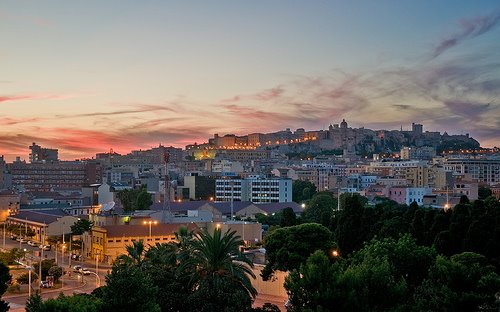

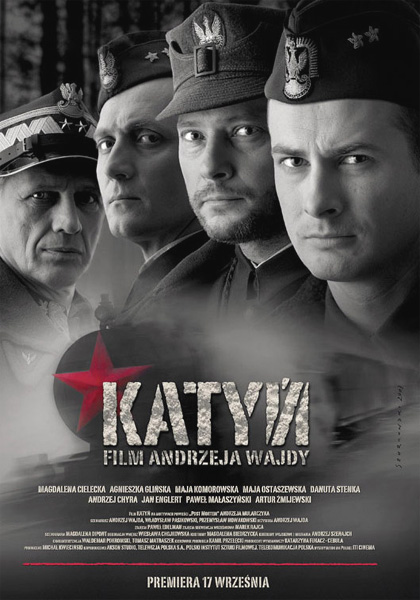
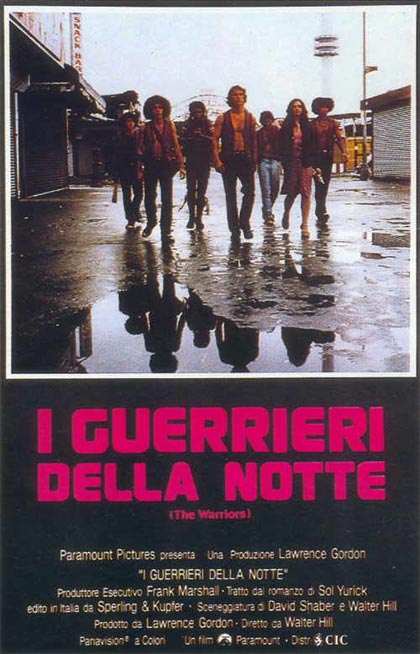

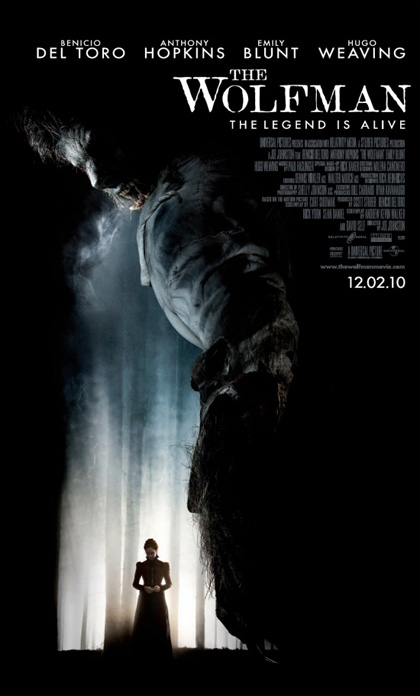

















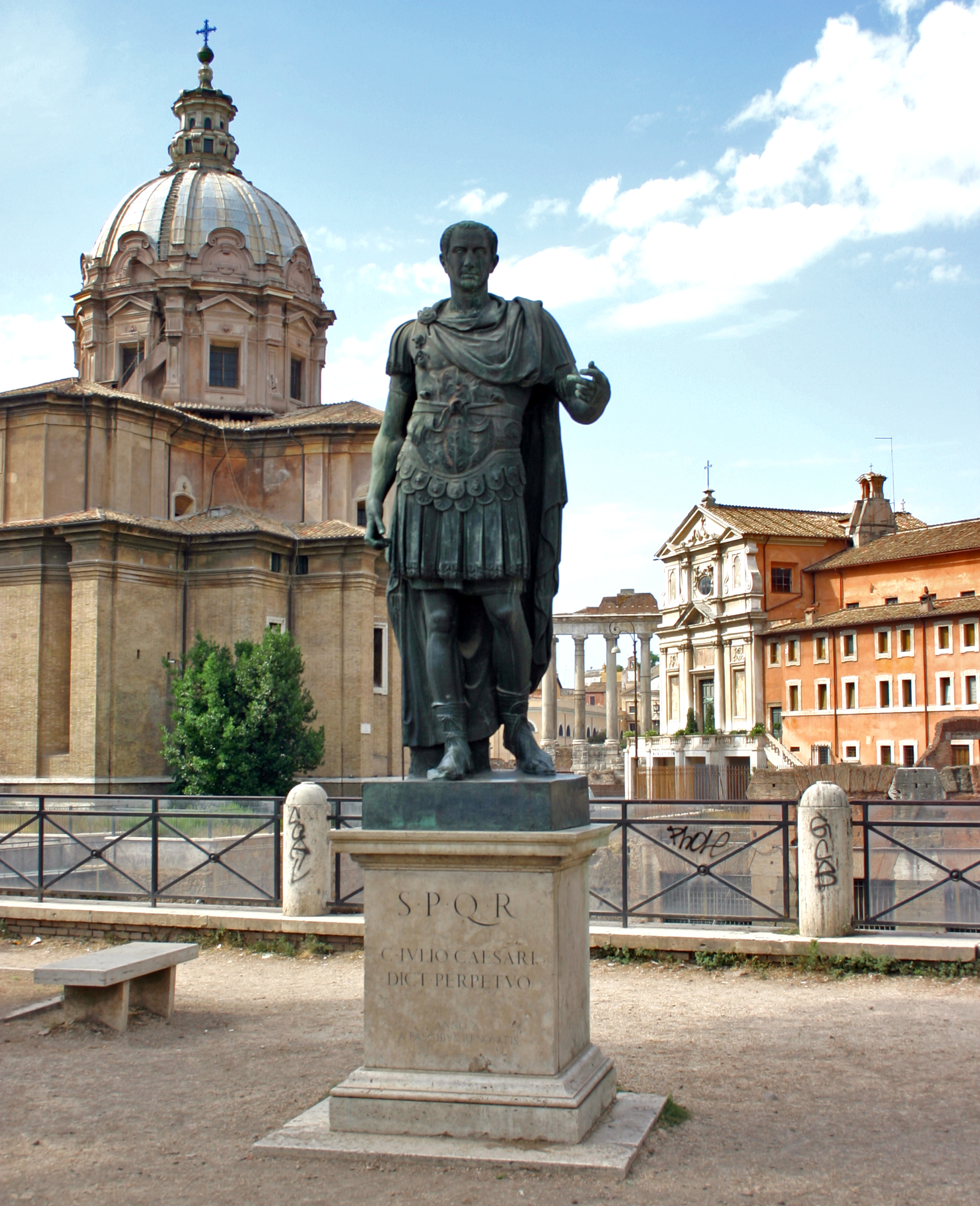

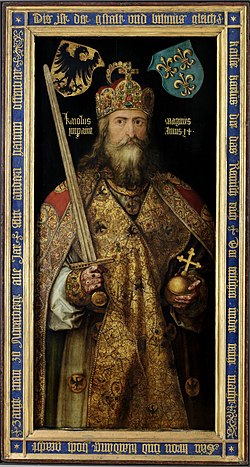






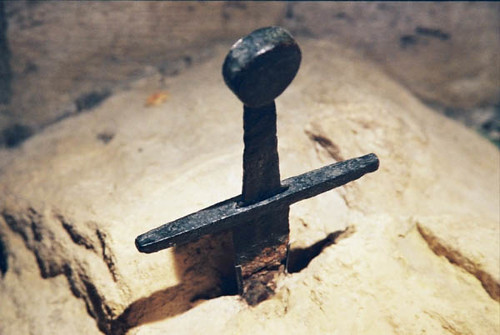







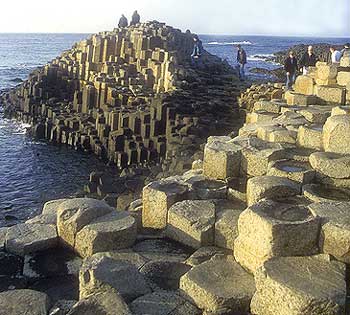















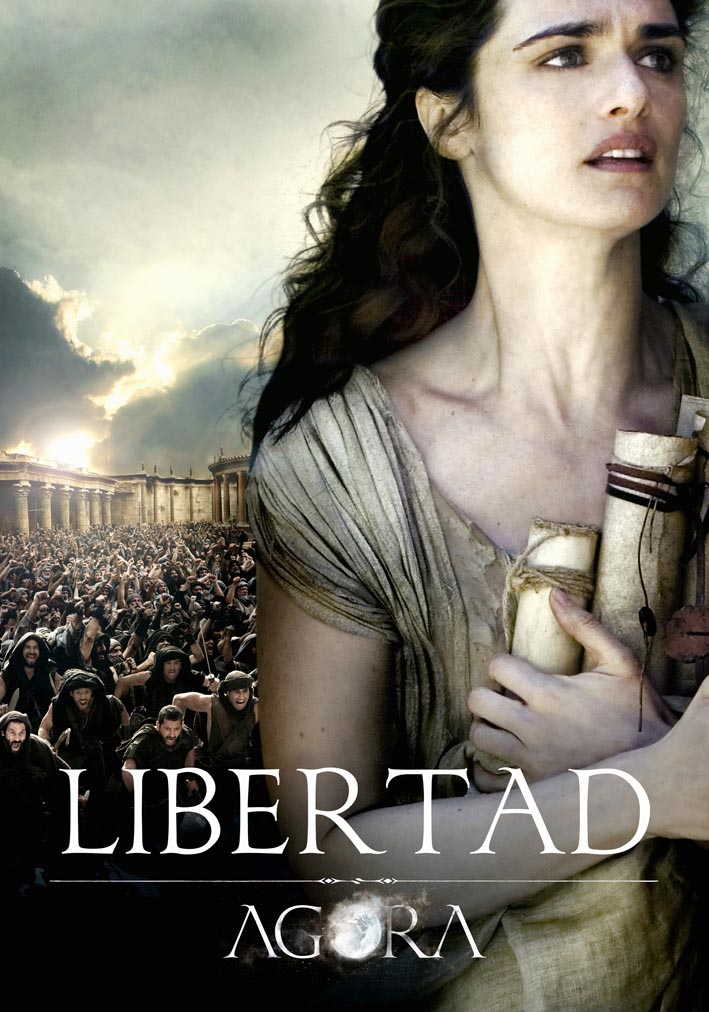

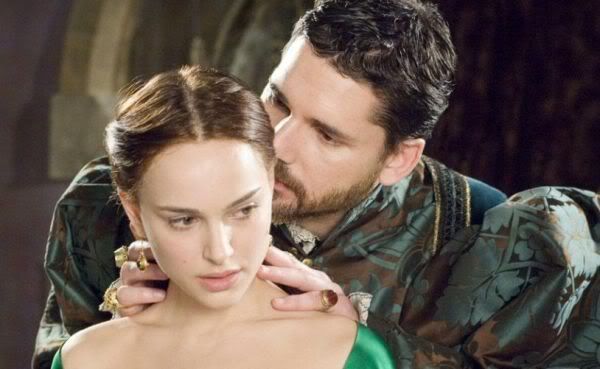


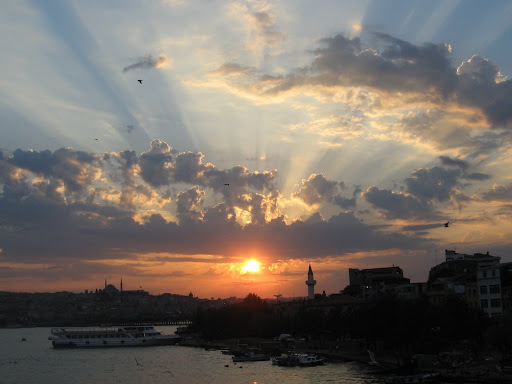






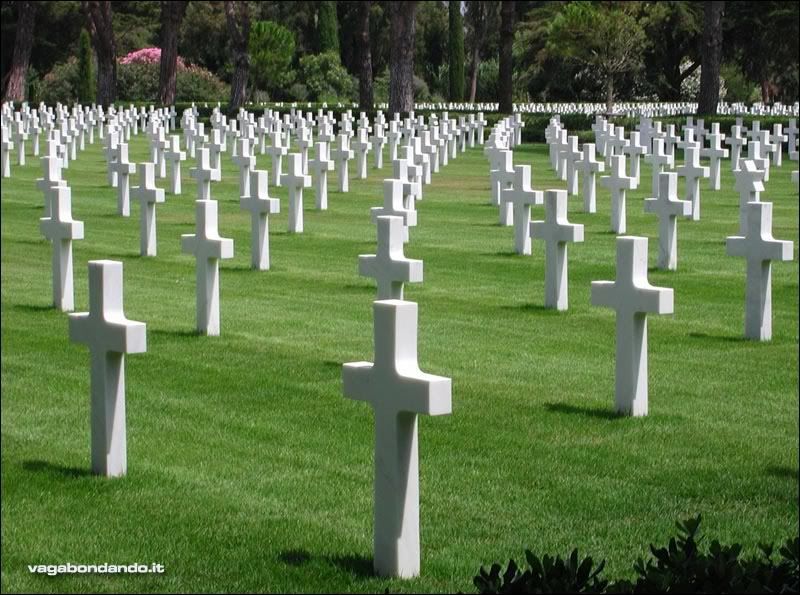











Nessun commento:
Posta un commento